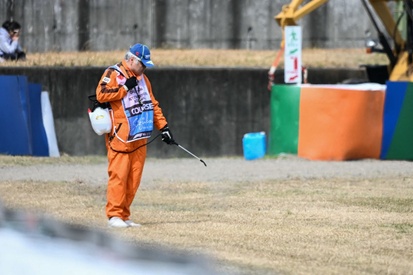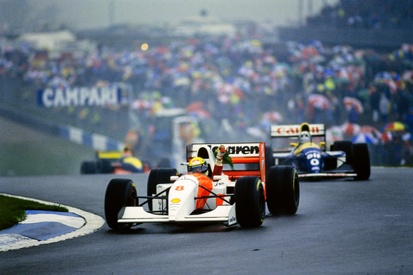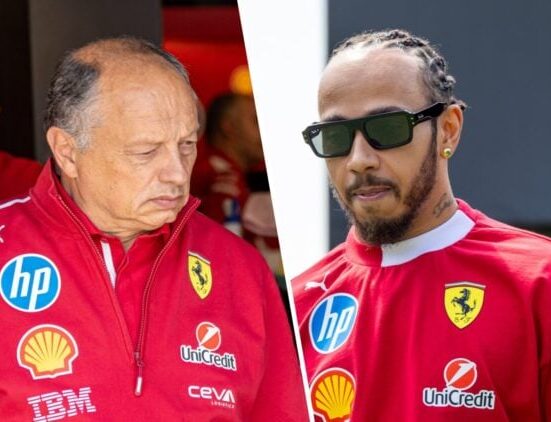The FIA, Formula 1 and its teams have discussed mechanisms in the 2026 engine regulations to allow trailing manufacturers to catch up, while investigating solutions to avoid a repeat of the Japanese Grand Prix grass fire incidents.
The 2026 engine rules were a key point on the agenda of the latest meeting of the F1 Commission on Thursday in Geneva, amid concerns over the new regulations blowing the grid wide open when they are introduced next season. There is a widespread desire to avoid a repeat of 2014 when Mercedes stole a march on the rest of the field and it took for years for some manufacturers, like 2015 entrant Honda, to catch up.
Unlike then, next year’s engine programmes will be subject to a budget cap, which would make it even harder to those who lag behind to catch up, which is why various catch-up mechanisms were discussed at the meeting.
Motorsport.com understands teams came to a basic understanding to allow manufacturers who fall behind to use additional dyno hours and as well as extra engine budget cap headroom. Only power unit and not team performance would be used to determine whether or not a manufacturer is behind.
Also on the agenda was a proposal to drastically reduce the electric component of next year’s power units to avoid scenarios where cars would have to dramatically slow down the straight as their batteries run out of charge.
The re-introduction of the topic divided opinion over the Saudi Arabian Grand Prix weekend, with Mercedes F1 chief Toto Wolff calling the proposal a “joke”, while Christian Horner – whose Red Bull team is working on in-house power units with assistance from Ford – was a big proponent. One middle ground would be to only make adjustments to the energy deployment rate in race trim on circuits dominated by long straights, such as Monza.
It is understood there is still some distance between the various teams on what an acceptable compromise would look like. Any engine related changes will be looked at in more detail by the power unit advisory committee.
In a statement the FIA said: “The F1 Commission discussed in principle refinements to the energy management strategy for 2026, as well as measures to address financial issues that can be faced by power unit manufacturers that experience either low performance or significant reliability issues in 2026.”
The F1 Commission also discussed possible solutions to the grass fires that derailed the Japanese Grand Prix weekend, with practice and qualifying halted several times due to sparks coming from the cars igniting the grass lining the Suzuka circuit.
Marshals spray water to dampen the grass to prevent trackside fires
Photo by: Mohd Rasfan – AFP – Getty Images
The FIA said “it was agreed to investigate both an alternative skid material (steel) and potential treatment on some circuits.” Switching from titanium to stainless steel on circuits that feature grass run-offs could have some implications regarding the weight of the cars and the wear of the skid plates, which is still to be discussed.
Other bits of housekeeping include amendments required to implement mandatory two-stop strategies at the Monaco Grand Prix as well as a necessary tweak to the capital expenditure allowance for new entrants, ahead of Cadillac joining next year.













Leave feedback about this